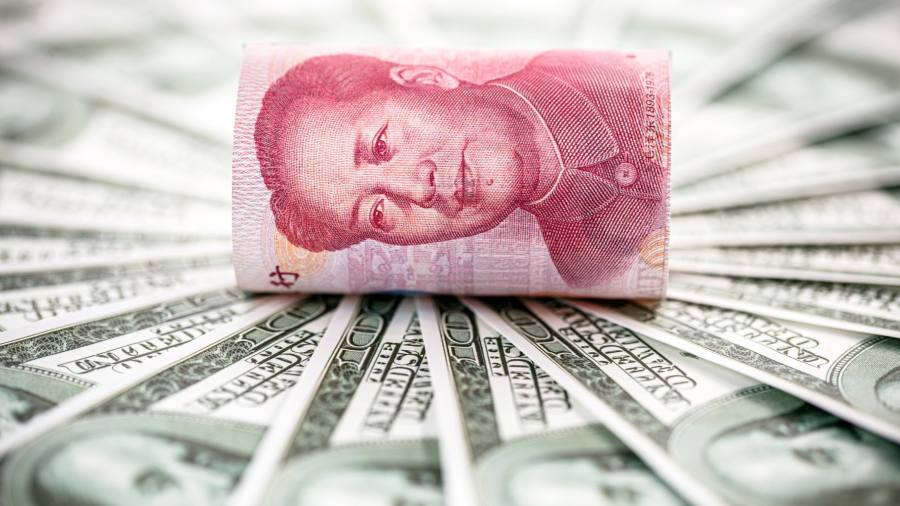Receive free Renminbi updates
We’ll send you a myFT Daily Digest email rounding up the latest Renminbi news every morning.
Beijing gave a strong warning against bets on renminbi depreciation and released a batch of positive lending data earlier than usual, spurring China’s currency to bounce back from a 16-year low touched last week.
The People’s Bank of China said in a statement on Monday that authorities “are capable of and feel confident in . . . keeping the renminbi exchange rate at a reasonably stable level”. The renminbi rose by as much as 1 per cent on Monday to an intraday high of Rmb7.2698 against the dollar.
“We will act when we act, resolutely correcting one-sided speculation,” the central bank added, referring to mounting bets against the currency’s dollar exchange rate driven by a string of underwhelming economic readings as China’s economy struggles to regain momentum.
Traders said the rhetoric from the central bank was much stronger than usual and that state-run banks, which have frequently supported the Chinese currency this year through purchases on the open market, were more actively buying up renminbi in exchange for dollars on Monday.
“The central bank showed its muscle this time and made a difference,” said a Shanghai-based currency trader. The gains for the renminbi outpaced those of other currencies against the dollar, as the dollar index measuring the US currency against a basket of peers fell 0.3 per cent in Asian trading on Monday.
Beijing also released better than expected lending figures to build on positive economic data released over the weekend showing that the country edged out of deflation in August. China’s statistics bureau released credit data shortly after the noon trading break on Monday in Shanghai, rather than after the closing bell.
The figures showed Chinese banks extended Rmb1.36tn ($186bn) of new renminbi loans in August, rising sharply from just Rmb345.9bn in July and beating market expectations.
The larger-than-expected rise in new renminbi loans spurred a surge of buying in the afternoon trading session that drove the benchmark CSI 300 index as much as 1.3 per cent higher, later pulling back to close the session up 0.7 per cent.
Morgan Stanley analysts argued that the strong credit rebound was driven by a rise in local government special bonds issuance. They expected broad credit growth to edge up further by 10 to 20 basis points in September on continued strong government bond issuance and the easing of requirements for minimum mortgage interest rates nationwide.
However, they warned the sustainability of the credit growth improvement would hinge on policy efforts and said that stronger central government-led fiscal stimulus was “needed to help prevent the risk of a debt-deflation loop”.
These could include more funds for so-called urban village redevelopments as well as for social housing construction and green infrastructure, they said. It could also include local government debt resolution measures such as debt swaps from the central government.
“China credit data came in stronger than market expected, showing some initial signs of credit stabilisation on the back of PBoC’s stepped-up policy efforts with its surprise rate cuts, mortgage supports as well as an acceleration on government bond issuances in August,” said Zhi Xiaojia, chief China economist at Crédit Agricole.
“This is a good signal that at least growth is showing some early signs of stabilisation, even though uncertainty still looms.”
Read the full article here



